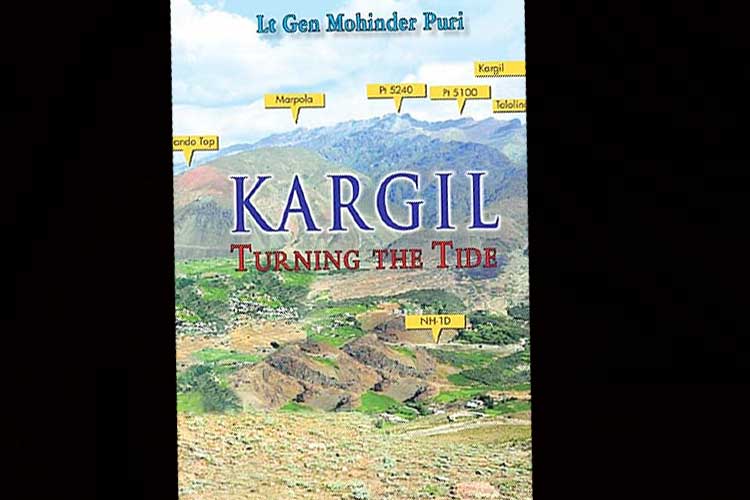New Delhi: It was the speed and spontaneity with which the Indian Army launched its attacks that took the enemy by surprise, leading to their victory in the 1999 Kargil war, says Lieutenant General Mohinder Puri, who headed the 8 Mountain Division.
Gripping accounts of valour and fortitude from the battle front of the war between India and Pakistan have been recollected in a new book penned by Puri.
The book titled ‘Kargil: Turning the Tide’, which was launched in Delhi on Tuesday, is a first-hand narrative of the operations of 8 Mountain Division, which was tasked to evict the enemy from the Drass-Mushkoh Sector during ‘Operation Vijay’.
“We surprised the enemy with the speed and ferocity of our movement. It was the speed with which we conducted the operations and took them totally by surprise, this was one of the reasons why we succeeded in evicting the enemy,” he said.
Recounting on such incident, the then Major General Puri said how after several failed attempts to capture the pivotal Tololing peak, he had asked his men to attack again the next evening, but by the time he reached his headquarters, India had already conquered the strategic feature.
The Tololing, a dominant position overlooking Srinagar- Leh Highway (NH-1D), was so strategic that after it was conquered it was only a matter of six days for Indian troops to notch up a string of successes by evicting well-entrenched intruders in four nearby outposts.
He said, Colonel MB Ravindranath, Commanding Officer of the 2 Rajputana Rifles, radioed him, camping some 20-km away and said in a terse message, “Sir, I’m on Tololing top.”
“After I was informed that we have not been able to capture Tololing, I just asked them to consolidate and in the evening I said, ‘have a go.’ By the time I reached the headquarters, I was told that we have captured Tololing. I spoke to Ravi and when I asked him what had happened he said he just saw a window of opportunity and there he launched the attack and captured the feature which was until then with the enemy,” Puri said.
Puri’s Division was responsible for spearheading the Army’s offensive in the Kargil sector which restored the sanctity of the Line of Control by capturing Tololing, Tiger Hill and Point 4875.
General (retd) VP Malik, who himself has authored a book titled “Kargil – From Surprise To Victory” in 2006 on the same subject inaugurated the event at Manekshaw Centre in New Delhi.
“Lots of books have been written about the Kargil War and most of them are hearsay. There are only two authentic books I can mention, one is General Puri’s and I will take credit for the second one. While I have dealt with the war at a macro level, General Puri’s book talks about the several battles fought. After all, there is no war without these battles,” Malik said.
A fast-paced read, the book captures the emotions and sentiments of a soldier, the apprehensions and fears of the leaders, and finally the joy and ecstasy of victory.
“I have gone through the book and it is a good read. It brings out vividly the emotions of the soldiers before they went into the battle, during the battle and after the battle has ended,” he said.
With stories about several close quarters, hand to hand battles fought in challenging and hostile environment of the perilous rugged high altitude terrain, inclement weather and an entrenched enemy, Puri’s work is a moving tale of fortitude, valour and exemplary junior leadership.
“We had to put the division through an advanced state of acclimatisation so that they could get on to the fight without any problem,” Puri further said.
The book covers a wide spectrum of the event- from attacks at platoon level to issues impinging on national security and thus is fit to serve as a document of immense relevance to military professionals.
The war received a massive media coverage such that it came to be known as the first televised war of the country.
According to the author, India suffered very high casualties in the successive battles that were fought during the war with 268 killed and over 818 soldiers wounded.
“We suffered very heavy casualties but what was most commendable was that the ratio of the officer to man casualty was 1 officer to 12 men,” he said.
Indian soldiers from the division, who had fought and laid their lives for the country, were honoured with a rich haul of gallantry awards that included 3 Param Vir Chakras, 8 Mahavir Chakras and 42 Vir Chakras.

